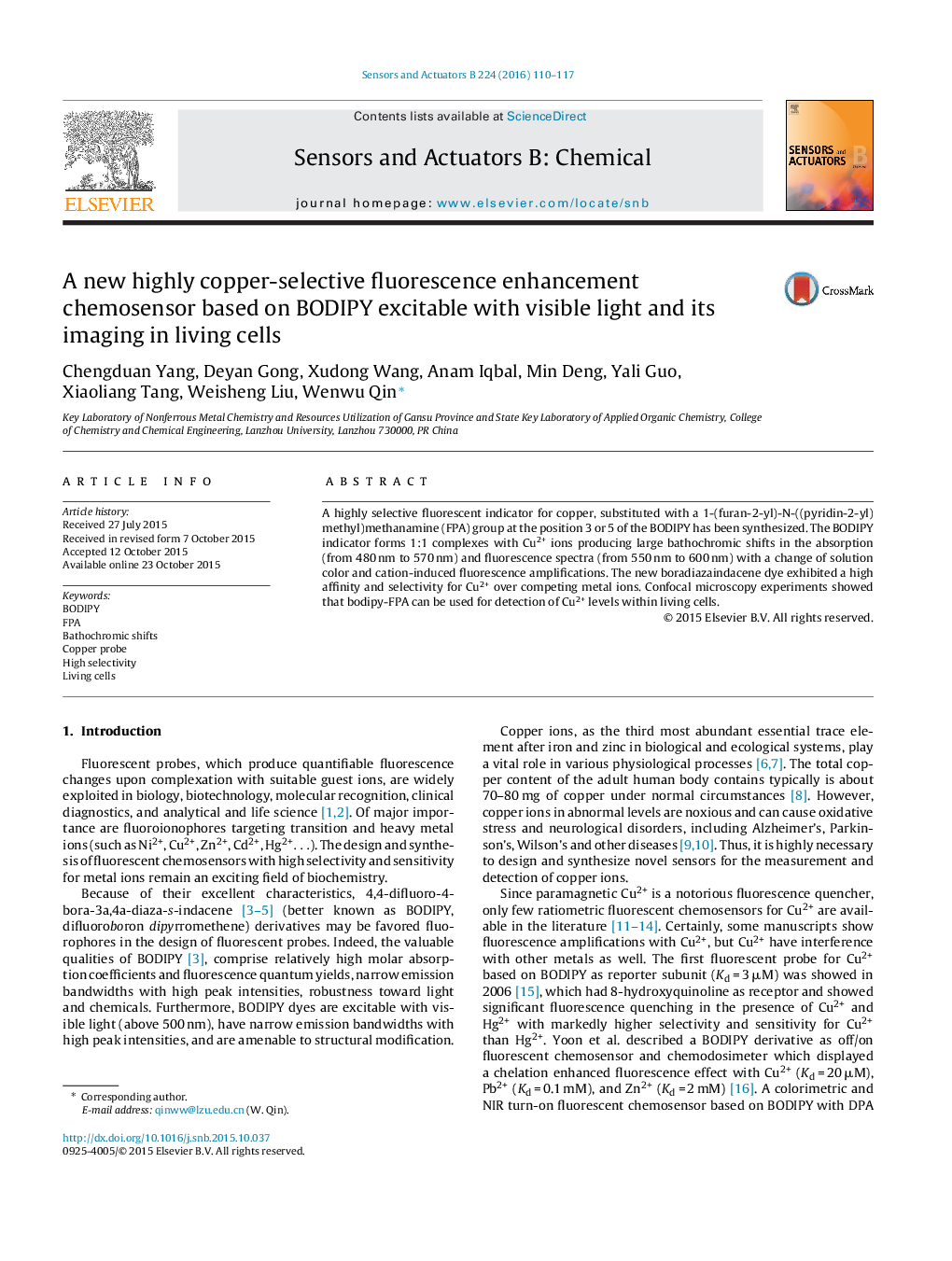| Article ID | Journal | Published Year | Pages | File Type |
|---|---|---|---|---|
| 750467 | Sensors and Actuators B: Chemical | 2016 | 8 Pages |
•A BODIPY derivative sensor 1 was synthesized and its crystal structure was obtained.•Sensor 1 shows 90 nm bathochromic shifts and a large increase in the fluorescence intensity upon binding copper in HEPES buffer solution.•Confocal microscopy experiments showed that 1 can be used for detection of Cu2+ levels within living cells.
A highly selective fluorescent indicator for copper, substituted with a 1-(furan-2-yl)-N-((pyridin-2-yl) methyl)methanamine (FPA) group at the position 3 or 5 of the BODIPY has been synthesized. The BODIPY indicator forms 1:1 complexes with Cu2+ ions producing large bathochromic shifts in the absorption (from 480 nm to 570 nm) and fluorescence spectra (from 550 nm to 600 nm) with a change of solution color and cation-induced fluorescence amplifications. The new boradiazaindacene dye exhibited a high affinity and selectivity for Cu2+ over competing metal ions. Confocal microscopy experiments showed that bodipy-FPA can be used for detection of Cu2+ levels within living cells.
Graphical abstractFigure optionsDownload full-size imageDownload as PowerPoint slide
